Fibreglass is another name for glass fibre. It is a material manufactured from extremely fine glass fibres. Fibreglass is a material which is light in weight, extremely durable and sturdy. Although the strength properties are much lower and less rigid than carbon fibre, the material is generally much less fragile. In addition to these, the raw material is much less costly as compared to carbon fibre. As compared to metals, its bulk strength and weight properties are also very favourable, hence it can be easily shaped using moulding processes. Considering its usefulness and unique properties, fibreglass is used in various industries i.e. beverages, manufacturing, aerospace and many more. Thus, in this blog, we are going to discuss “Fibreglass” in detail.

What is Fibreglass?
Fibreglass is a reinforced plastic material composed of glass fibres embedded in a resin matrix. In other words, it is a textile fabric made from woven glass filaments. It is commonly known as glass-reinforced plastic (GRP) or Glass-fibre reinforced plastic (GFRP).
Fibreglass is popular for its attributes of high strength compared to relatively lightweight. Fibreglass in actual is made of glass, similar to windows or the drinking glasses. The glass is heated until it gets converted into molten form. After it has achieved the molten form, it is passed through superfine holes, forming glass filaments that are extremely thin – so thin that they are better measured in microns.
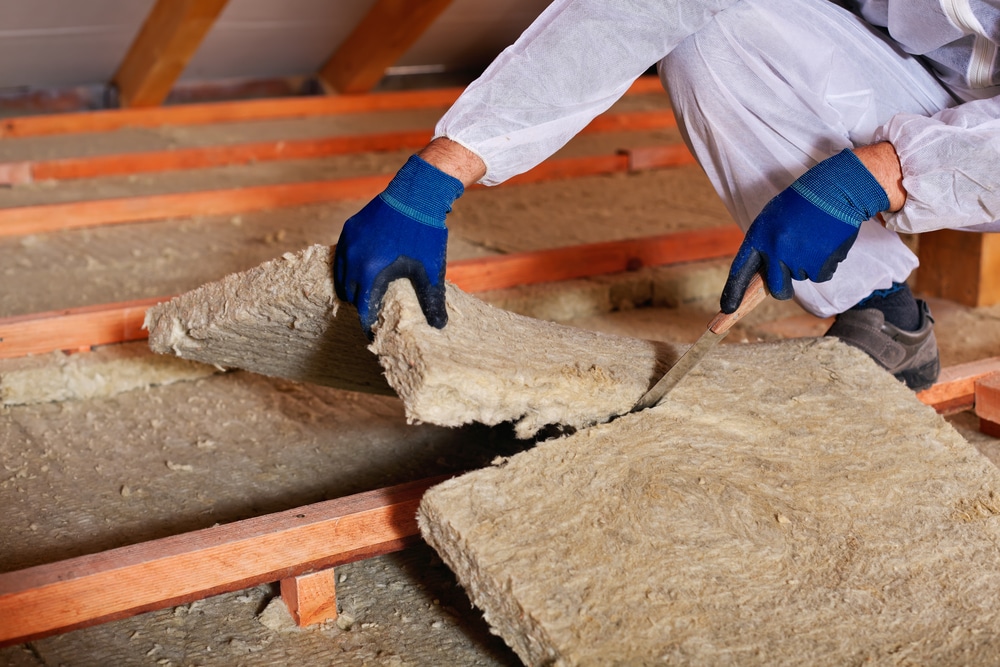
Fibreglass has a history of more than 50 years. Fibreglass is a corrosion resistant, lightweight, economical, easily processed material. It has some good mechanical properties. It is quite dominant in industries for corrosion equipment boat building etc. It also plays a prominent role in other industries like medical, recreational, architectural, automotive industry.
Properties of Fibreglass

Dimensional Stability:
Fibreglass is dimensionally a stable material. The most advantageous part of this material is, it does not shrink or stretch after exposure to very low or high temperatures.
Moisture Resistance:
When exposed to water, it does not absorb moisture or change chemically or physically. Its property is unaffected under any such given circumstances.
High Strength:
The high strength-to-weight ratio of glass fibre makes it a preferable material in applications where minimum weight and high strength are vital.
Fire Resistance:
Fibreglass is an inorganic material. It neither burns nor support combustion. It retains almost 25% of its initial strength at temperature 1000°F (540°C).
Chemical Resistance:
Most of the chemicals have little or no effect on fibreglass, but fibreglass is affected by hydrofluoric acid, hot phosphoric acids and strong alkaline substances. Normally it does not mildew or deteriorate.
Electrical Properties:
Fibreglass has been proved to be an excellent material in electrical insulation application. The combination of properties like high strength, low moisture absorption, heat resistance and low dielectric constant makes it ideal for printed circuit boards and insulating varnishes.
Thermal Conductivity:
The combination of properties like low coefficient of thermal expansion and thermal conductivity makes fibreglass dimensionally a stable material which rapidly dissipates heat as compared to asbestos and organic fibres.
Compatibility with Organic Matrices:
Glass fibre is obtained in varying sizes. Talking about its compatibility factor, glass fibre has the ability to combine with many synthetic resins and even with certain mineral matrices like cement.
Non-rotting:
Fibreglass does not rot or decay. It remains completely unaffected by the action of rodents and insects.
Chemical Composition of Fibreglass:
When exposed to water, it does not absorb moisture or change chemically or physically. Its property is unaffected under any such given circumstances.
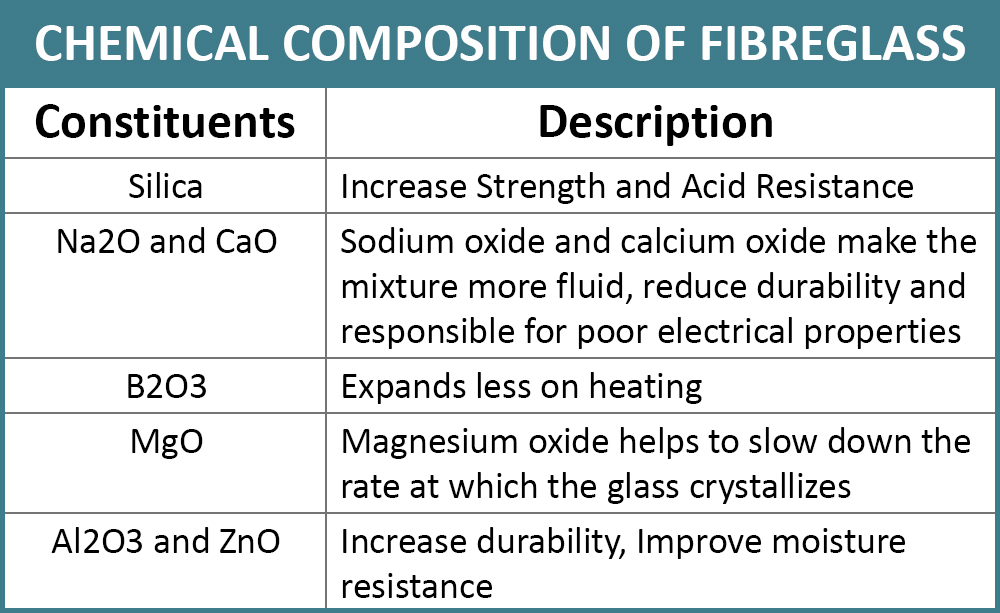
Size and Thickness of Fibreglass
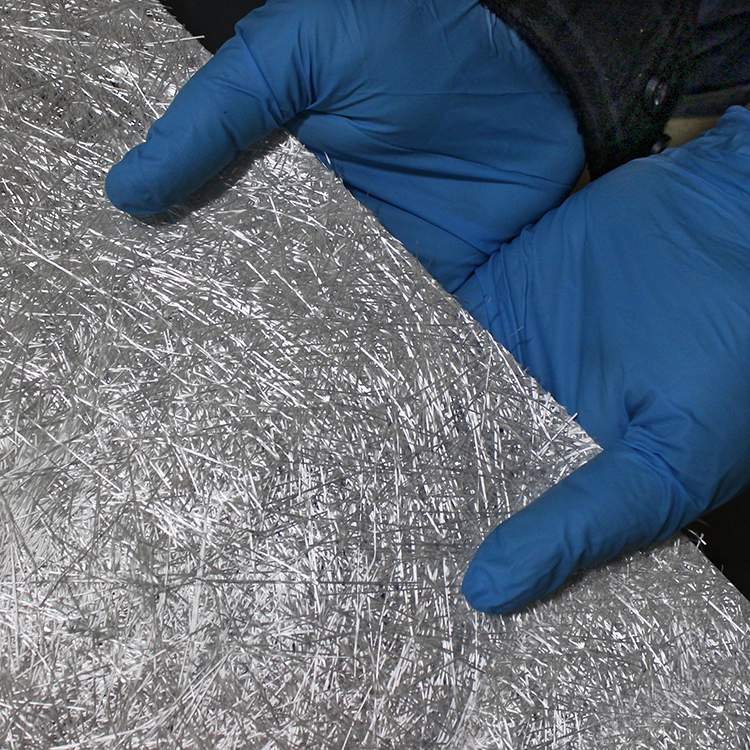
- Thickness of fibreglass varies from 1.5mm to 75 mm.
- Size of fibreglass – 854 X 2082 mm
Uses of Fibreglass
Use of Fibreglass in Construction Industry:
01. Mesh Fabrics:
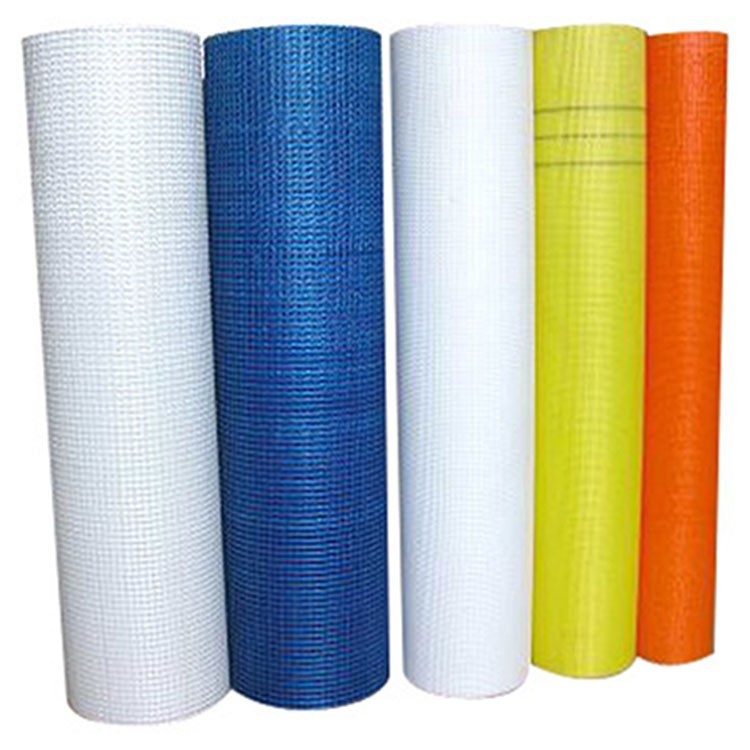
Fibreglass mesh fabrics are used for facade reinforcement. They are also used to prevent cracks in interior walls. They are a significant component of insulation systems.
02. Fibreglass Dry Wall Tapes:

Self-adhesive tapes which are made of fibreglass are used for enhancing joint strength, for quick and easy drywall as well as repair solutions.
03. Fibreglass Wall Covering:

Glass fibre wall covering is used for finishing of walls, for decorating them, as well as for renovating the walls. It is also used in ceilings. In addition to that, it also functions as a fire protectant. Paint can also be applied on it.
04. Fibreglass Laid Scrim:
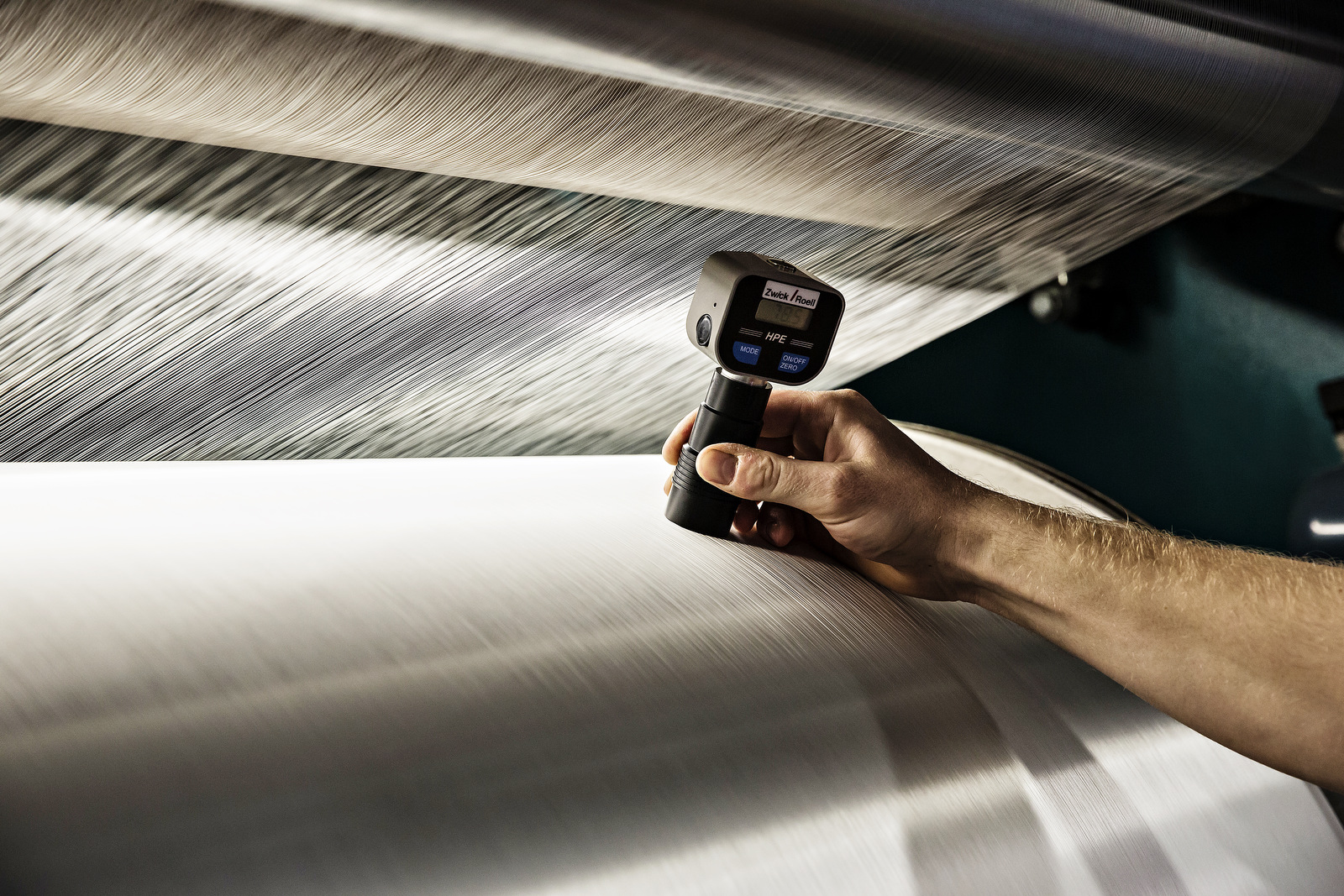
Scrim is a reinforcing fabric made from continuous filament yarn of fibreglass in an open mesh construction. The laid scrim manufacturing process chemically bonds non-woven yarns together which gives the scrim unique characteristics. Scrims can be used in numerous applications and products.
05. Fibreglass Flooring:
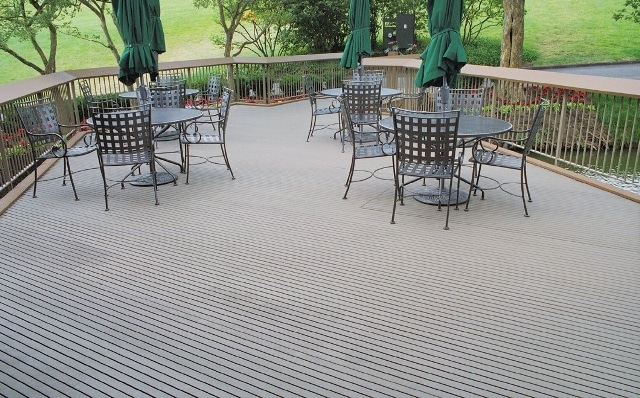
Glass fibre yarns are used as reinforcement of various floor coverings. The advantages are high tensile and puncture resistance to heavy traffic products and also dimensional stability for PVC, TPO (thermoplastic polyolefin) and other materials.
06. Fibreglass Cladding:
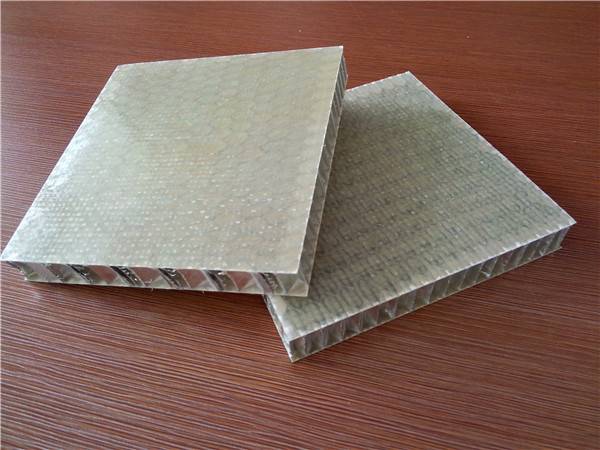
If fibreglass is mixed with composites, concrete, or polyester, it can also be used as cladding. This version of fibreglass comes in panels, and it can be installed like other cladding panel. The additional advantage associated with it is, in case of specific damage, it can be replaced easily. Pure fibreglass panels are also available in the market.
07. Fibreglass Window:
Fibreglass windows are gaining popularity these days with a greater demand for greener products and are setting new standards in terms of efficiency and strength. Fibreglass windows are widely used in commercial and residential buildings. The fibreglass window sections consist of a foam filled core or a hollow core. They are generally available in the form of double hung, casement, awning windows and horizontal sliding windows.
Use other than in Construction Industry:
Fibreglass has a wide range of usage. Apart from construction industry, fibreglass is used in beverage and, chemical industry, cooling towers, docks and marines, food processing, fountains and aquariums, manufacturing, metals and mining, power generation, plating plants, pulp and paper industry, automotive, aerospace and defence industries.
Types of Fibreglass
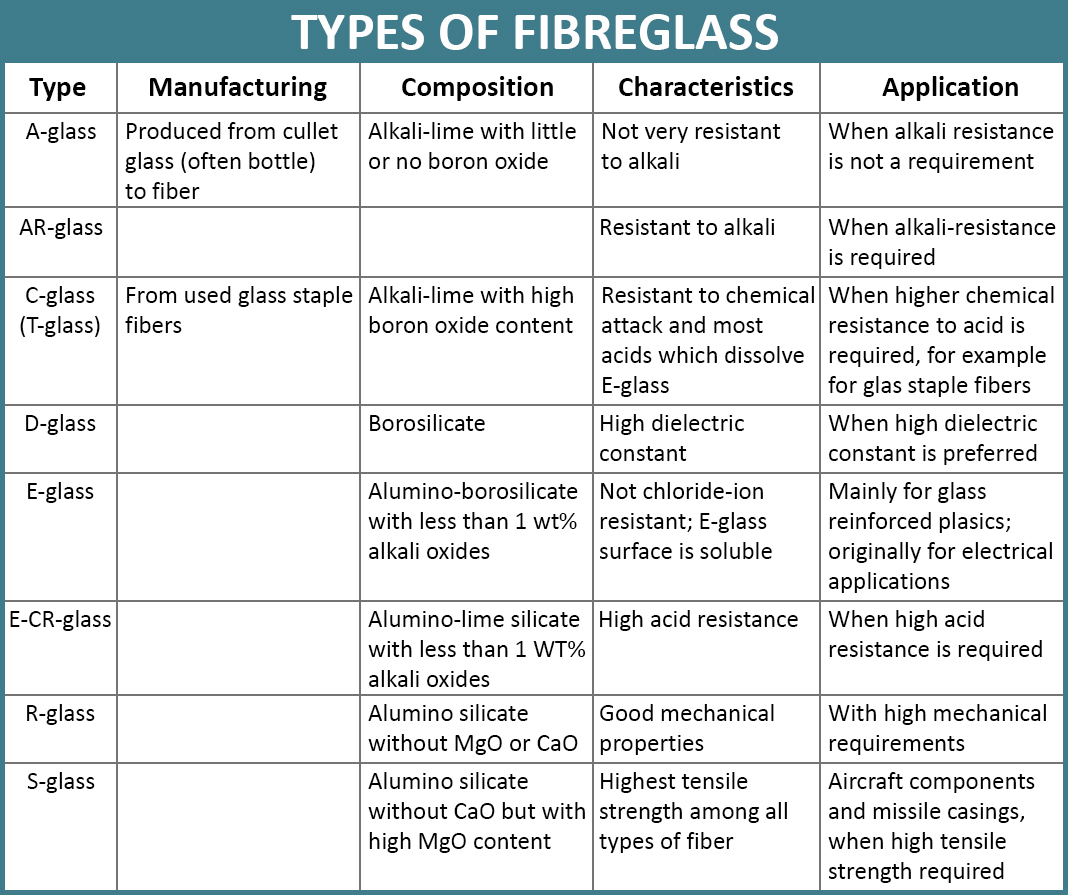
Depending upon the raw materials used and their proportions to make fibreglass, they can be classified into the following types.
A Glass – This glass contains 72% silica and high alkali fibreglass contains (25% Soda and lime). They are transparent, easily formed and most suitable for window glass. But the disadvantage of this glass is its poor resistance to heat (500–600°C). They are used for windows, containers, light bulbs and tableware.
C Glass – This is a chemical glass made of sodium borosilicate (alkali-lime glass) with high boron oxide content which improves durability, making it a preferable composition for applications requiring corrosion resistance. It is also used for glass staple fibres possesses.
D Glass – They are borosilicate glasses with improved dielectric strength and low density, developed especially for improved electrical performance.
E Glass – It is an electrically resistant glass fibre. This glass is made of alumina-calcium-borosilicate. It is used as glass reinforced plastics as general-purpose fibres where strength and high electrical resistivity are essential.
ECR Glass – These are calcium alumino silicate glasses. They have superior quality of long-term resistance to strain crack corrosion in acidic conditions.
AR Glass – They are high quality alkali resistant glasses composed of alkali zirconium silicates used in cement substrates and concrete.
R Glass – R glass is calcium alumino silicate glasses having High-strength, high-modulus glass having lower cost than “S”.
S & S2 Glass – These are magnesium alumino silicate glasses manufactured for particularly aerospace applications.
Fibreglass come in various forms for various applications,
Fibreglass Tape:
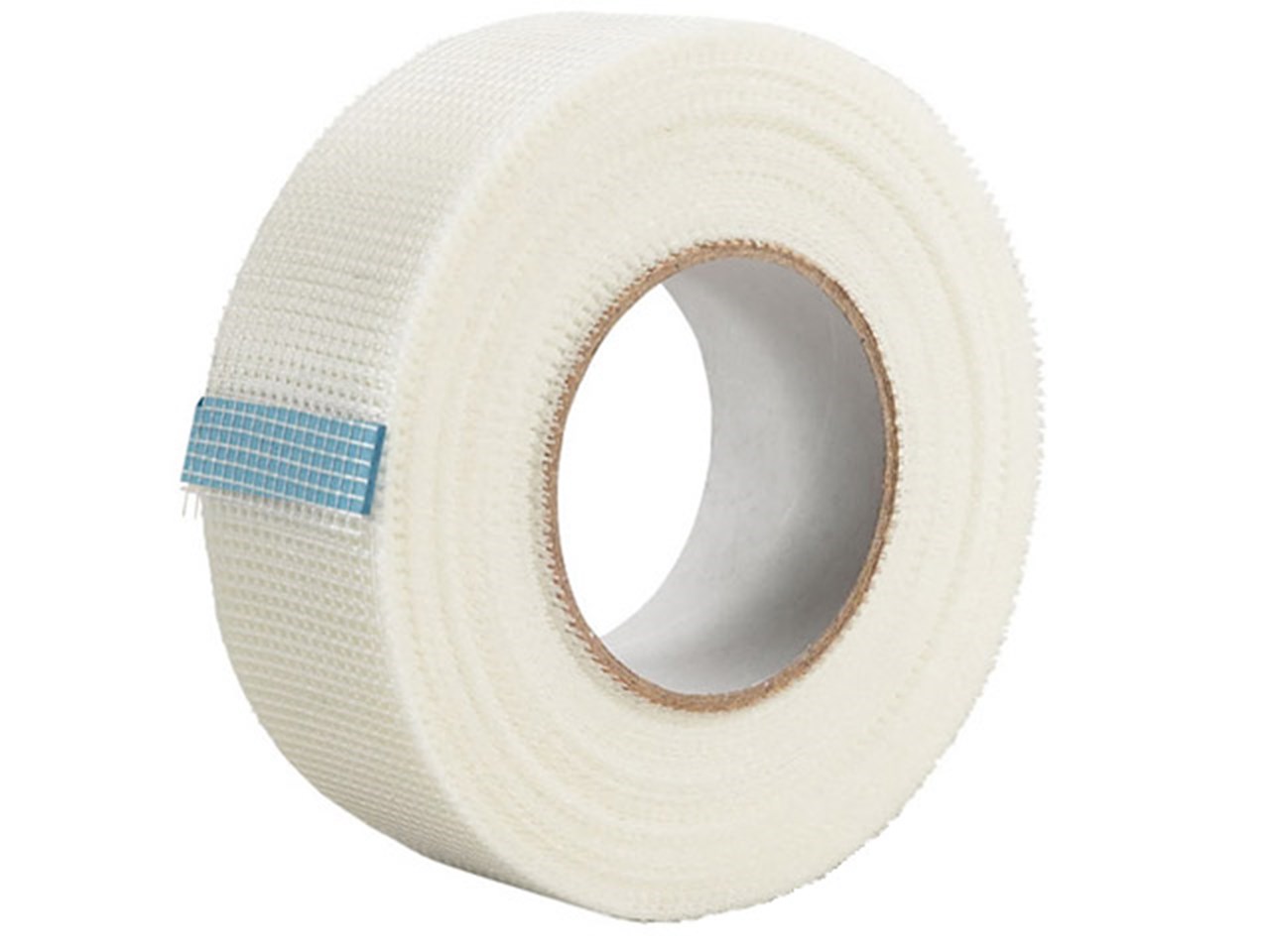
Fibreglass tapes are made up of glass fibre yarns. These fibre yarns are well-known for their thermal insulation properties. This form of fibreglass finds wide applications in hot pipelines and wrapping vessels.
Fibreglass Cloth:

Fibreglass cloth is a smooth material available in various variants like glass filament yarns and glass fibre yarns. It is extensively used as heat shields in fire curtains and others.
Fibreglass Rope:
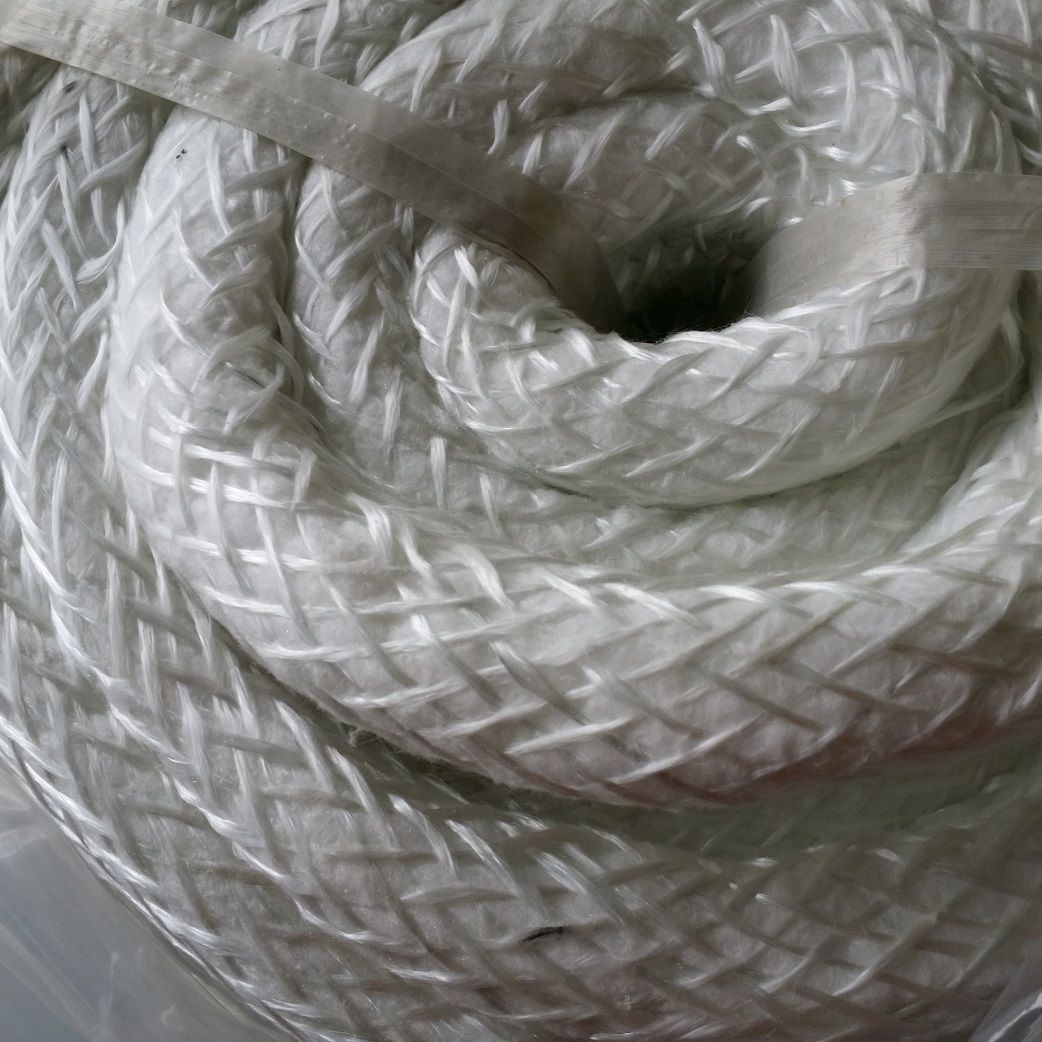
Ropes are braided from glass fibre yarns. These ropes are used for packing purposes.
Advantages of Fibreglass
- It is soft to touch and flexible in nature.
- It has high tensile strength.
- Proof against fire, vermin, water and acids.
- Thermal and sound insulation.
- It increases impact strength of concrete and restrict shrinkage creeps.
Disadvantages of Fibreglass
Moisture Issues:
Fibreglass insulation is particularly prone to moisture. Unlike other materials such as sprayed foam insulation or foam board, wet fibreglass insulation loses all R-value and has almost no insulating properties until it dries out. Moisture can harm insulation in attics as primary location for fibreglass batts due to roof leaks or from simple condensation.
Mould Issues:
Mould growth will occur when moisture is present in fibreglass insulation. It is more common in fibreglass as compared to other insulation materials such as loose-filled cellulose as cellulose does not permit free air movement that carries moulds pores and delivers moisture. Airborne mould spores that settle in the fibres of fibreglass insulation grow even when exposed to moisture from water vapour in the air or due to condensation. Mould is one of the causes of unhealthy indoor air quality and it also produces allergic symptoms in affected individuals.
If you want to know some sign of mould in your home, Gharpedia has come up with the article on the dame. Please do check it.
Coverage Issue:
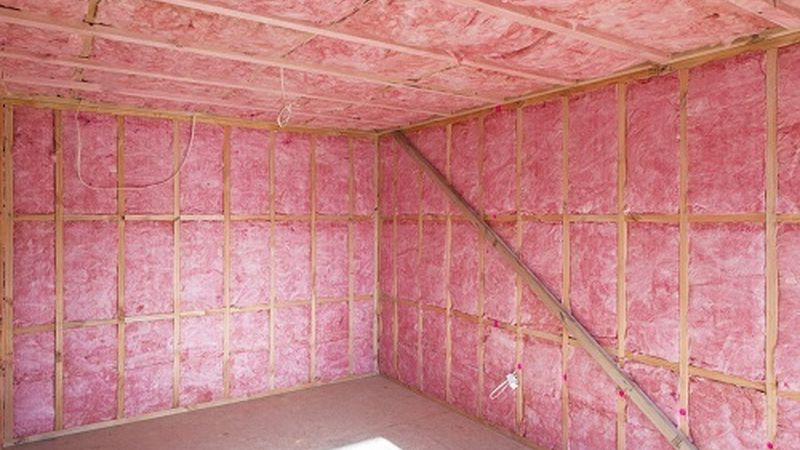
Fibreglass batts are available in pre-cut widths of 16 inches or 24 inches. Residential attic construction has many odd-shaped crannies, nooks and other anomalies which are not accommodated by the standard-size format of fibreglass batts. Furthermore, wall interiors contain conduits, electrical outlet boxes and many other obstructions. Even a small gap in insulation that permits unrestricted flow of heat energy can reduce the overall heat resistance of a ceiling or wall.
Air Exchange Issues:
In addition to conduction directly through walls and ceilings, heat energy also moves through direct air exchange, such as air leaks through a ceiling into an attic. Other insulation materials such as sprayed foam or loose-fill cellulose are denser and give more effective protection against air leaks than glass fibre. Air passes through the fibreglass easily as it has low density and also it comes in a fluffed-up form. When you install fibreglass in an attic, you expend your time and care in advance to seal air leaks from living spaces below- before they are permanently covered by a layer of insulation. This includes minor structural cracks and gaps around any ceiling light fixtures, electrical conduits and HVAC ducts that penetrate the attic.
Manufacturing Process of Fibreglass
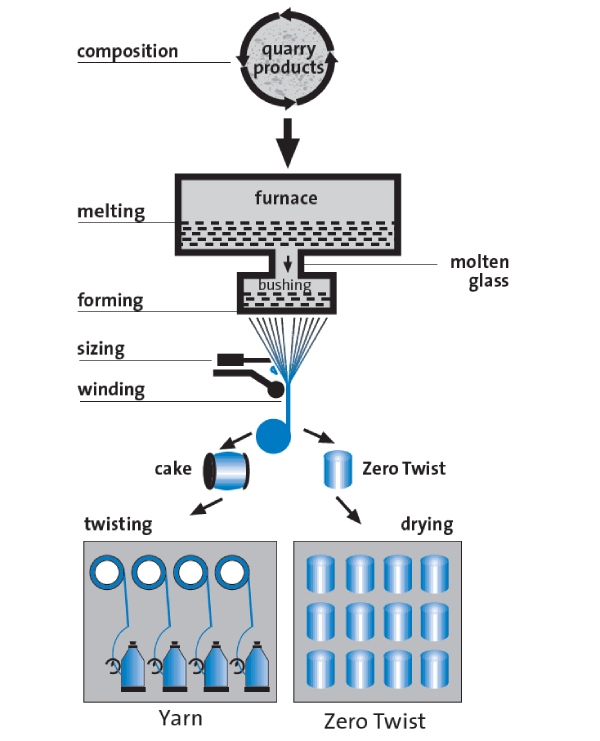
- It consists of minute glass rods and each glass rod represents the parent material in all respect.
- It is made from silica glass in a special manner, by forcing the molten glass through fine apertures under high pressure, when thread like mass is obtained.
- It is made either in the form of continuous strands alike silk or in the staple form just like wool.
To sum up, fibreglass is an essential material which has its usage in the range of industries including the waste water treatment plants, HVAC, fireproofing, beverage industry and oil fields. It is not a newly invented material. It has been in use since 1930. According to ‘Korwin Edson’ (Senior Scientist), today there are over 40,000 applications just as reinforcement. Fibreglass is an extremely versatile material that has gained popularity in the recent decades and is used in many ways in our daily lives.
Image Courtesy: Image 3, Image 4, Image 6, Image 7, Image 8, Image 9, Image 10, Image 11, Image 12, Image 14, Image 15, Image 16, Image 17, Image 18

